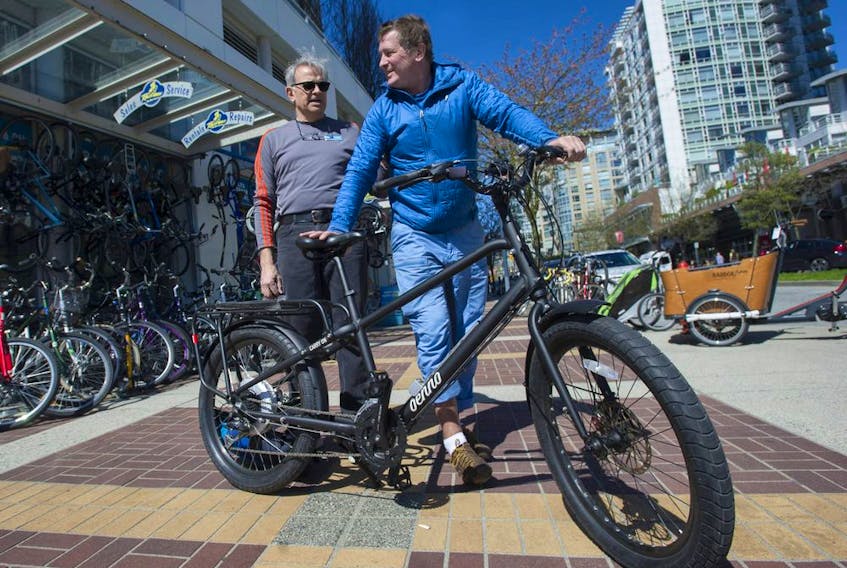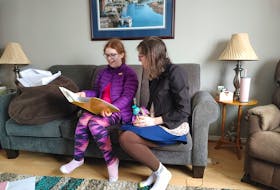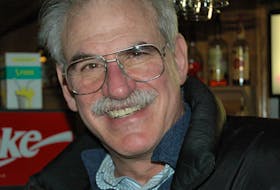Stephen Sumner is on a one-man worldwide humanitarian mission to help amputees recover from the phantom pain in their missing limb with a drug-free solution that involves a simple $10 household item.
As someone who lost a leg in a hit-and-run motorcycle accident 15 years ago while travelling through Italy, he has first-hand knowledge about phantom limb pain syndrome.
“It’s the worse pain I’ve ever experienced,” said Sumner, 58, an above-the-knee amputee. “I’m an ex-athlete who’s been through a lot. I’ve broken every bone in my body, but this is by far the worst pain I’ve experienced. It’s very, very real for an amputee.”
About 10 years ago, he learned about “mirror therapy,” a type of mental reconditioning using a mirror to trick the brain into thinking the missing limb is still intact by reflecting an image of the healthy limb so that the patient sees both limbs.
“Basically, the image tricks your brain to think everything is A-okay again, and that you have a limb again,” said Sumner in Vancouver.
He felt fortunate to have broken free from the debilitating pain and decided to share his experience and knowledge with people of Southeast Asia.
Sumner started a charity called Me and My Mirror and over the past eight years has travelled for three or four months every winter. Travelling by bike, he has been to Cambodia, Laos, Myanmar and Vietnam, as well as Lebanon, Ethiopia and Sri Lanka, where he was put in touch with amputees wounded by war, land mines, or scooter accidents.
Enter Paul Dragan, no stranger to trauma himself. The owner of Reckless Bike Stores survived being shot in the chest outside his Yaletown store in 2014 by a former employee (who pleaded guilty to attempted murder and was sentenced to 18 years). He also knows about overcoming adversity.
“A positive thing that happened after that was I have become more compassionate,” said Dragan, who has “recovered as much as I’m going to.”
Dragan and Sumner had known each other 30 or so years ago, when they cycled and raced in the same circles, but had lost touch. A chance encounter about two years ago led to Dragan contributing to Sumner’s mission by donating a cargo bike for his trips.
“When I heard about what he was doing, I knew I wanted to help,” said Dragan.
The donated bike allows Sumner to load it up with supplies and ride comfortably from village to village.
“The bicycle gives me access to these places,” said Sumner. “I’m this giant white guy on a bicycle with one leg, and it shows them life doesn’t stop because you’ve lost a limb.”
Sumner estimates over the years he has distributed as many as 2,500 mirrors, all of which he makes by hand with materials he buys in the country he is travelling in.
“All I can do is show them the treatment and give them the mirror,” he said. He instructs them and tells them to do the exercises twice a day for 10 minutes over five weeks, which is what worked for him.
Physiotherapist Linda McLaren of McLaren Amputee Rehab in Vancouver has been treating amputees with mirror therapy for 10 years and has a success rate of 50 to 70 per cent.
“It doesn’t help everybody,” she said. The best candidates are those who are open-minded enough to engage in the exercises. For those who come in with the attitude that the idea is stupid and it’s not going to work, it usually doesn’t.
She and Sumner explained the mirroring of the healthy limb helps to change the neuropathways of the brain.
She said what Sumner is doing is “absolutely” helping those without access to care.
Doctors used to call post-amputation phantom limb pain — described as shooting, stabbing, cramping, pins and needles, crushing, throbbing or burning — a psychological problem, “but experts now recognize that these real sensations originate in the spinal cord and brain,” according to the Mayo Clinic website.
It says the exact cause is unclear, but MRIs show that portions of the brain once connected to the nerves of the amputated limb are active during phantom pain “explained as a response to mixed signals from the brain.”
It says a number of factors can contribute to the pain, “including damaged nerve endings, scar tissue … and the physical memory of pre-amputation pain.”
After spending the spring and summer in Vancouver, Sumner plans to travel to Colombia this fall, and next spring throughout the Balkans and Ukraine and Crimea.
The charity work is funded solely through donations. He blogs about his work at meandmymirror.org .
Copyright Postmedia Network Inc., 2019









